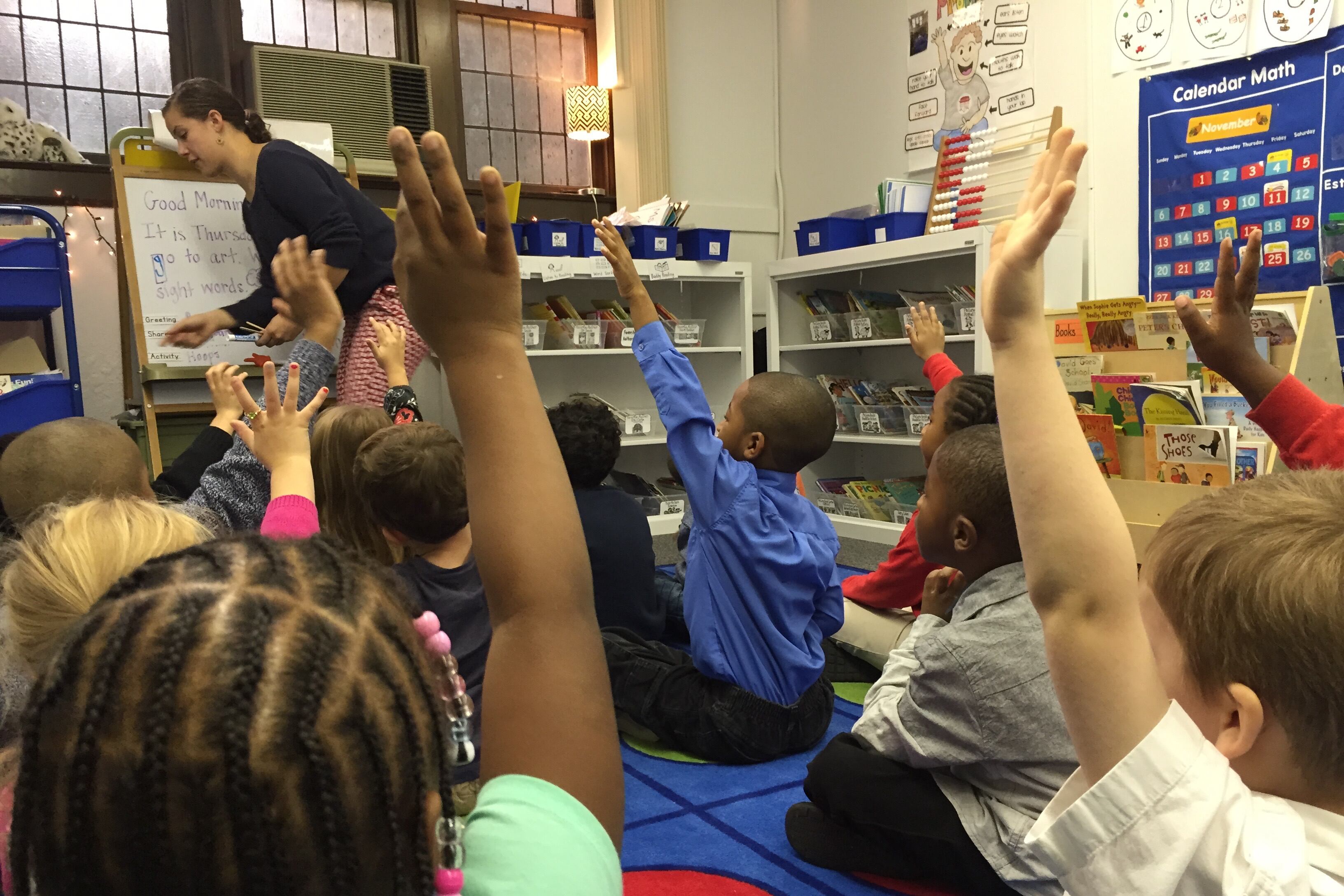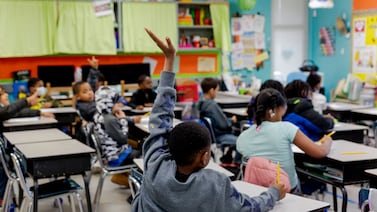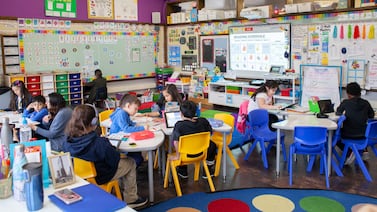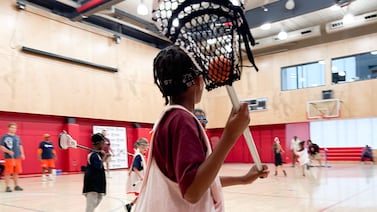Michigan’s lowest performing schools struggled last school year, even as pandemic-related challenges such as quarantines lessened, but their problems might have been worse without the extra resources and support provided under a state turnaround program.
Those were among the findings of Michigan State University researchers studying the efficacy of the partnership model, the state program developed to help improve schools with the lowest test scores, attendance, and graduation rates.
In a report released Wednesday, researchers from MSU’s Education Policy Innovation Collaborative found that the program may have mitigated some of the pandemic’s effects on student learning.
The report comes as the Michigan Department of Education prepares to designate another cohort of partnership schools that qualify for extra support based on a new round of standardized test results that showed widespread declines. Those declines mirrored student performance around the country.
“Because of the pandemic and remote learning, almost all the gains that many of our districts/schools had made were erased or almost erased,” the Michigan Department of Education wrote in its response to the report.
EPIC’s study highlights the disproportionate impact the COVID pandemic had on high-poverty areas and communities of color, where partnership schools are concentrated. Researchers hope policymakers use the data to target resources to schools and students who need them most.
MDE said it plans to intensify efforts to address student and teacher absenteeism and to help partnership districts attract and retain certified educators.
“One of the greatest challenges facing partnership districts is human capital,” MDE wrote.
Program assigns goals and resources to schools
Michigan launched the Partnership District Model in 2017 to help improve the state’s lowest performing schools and to meet requirements of the federal Every Student Succeeds Act, an Obama-era law that requires states to identify their lowest performing schools and provide comprehensive support to them.
Progress in partnership districts stalled during the pandemic and hasn’t yet recovered, EPIC found.
Yet, students in partnership schools performed comparably to — and in some cases better than — counterparts in demographically and academically similar districts that are not in the partnership program.
“If my child is enrolled in one of these schools, they’re getting extra support, and so I’d rather my child be in this school than one that barely missed the cutoff” for being designated a partnership school, said Katharine Strunk, director of EPIC.
Partnership districts are assigned liaisons who help them develop goals and access resources from the Michigan Department of Education and other agencies and stakeholders. They also receive a share of about $6 million a year in additional state funding — roughly $61,000 for each of the 978 current partnership schools.
Principals say they use that money to improve access to technology, hire more staff, and offer professional development, but told EPIC it hasn’t been enough.
But the ranks of partnership schools are likely to grow, based on recent standardized test results, Strunk says. That means each school’s share of the funding pool will decrease, unless more money is appropriated.
“These districts are the same districts that have been hit hardest by the pandemic, and what they’re going to need is more funding to support their strategies for improving student outcomes,” Strunk said.
How partnership schools addressed pandemic’s effects
Although tutoring is widely seen as an important strategy to address learning loss caused by the switch to online learning and other disruptions, principals of partnership schools told researchers it hasn’t been a priority in their districts.
That doesn’t surprise Strunk.
Successful tutoring programs are hard to implement, and they rely on being able to hire enough staff. Many districts already have trouble filling vacancies, she said. Enrollment in tutoring programs is another obstacle, Strunk said.
“Not just in Michigan but across the country, parents just did not opt in, especially for programs after school or during vacation time,” she said. “It might be because of transportation problems, or it might be because they think their kids have been through enough.”
Instead, partnership districts continued to use strategies already in place before the pandemic. New programs have largely prioritized students’ mental health and behavioral needs, which also grew during the pandemic.
Educators in partnership districts told EPIC researchers in surveys and interviews that their students continue to struggle with emotional challenges of the pandemic, which disproportionately affected their communities.
Sixty-two percent said they believed mental health was a major challenge for their students, and many pointed to inadequate resources to address them.
“We have a high population of students who have experienced trauma, but no one to help them with it, because the social worker is in a classroom substituting,” one teacher told researchers.
Attendance was another substantial challenge researchers identified in partnership districts. Educators told EPIC that student absenteeism was one of the biggest impediments to academic progress.
Updated report card expected in the fall
The state makes partnership designations based on school-level data, not district data. Districts that have at least one partnership school in them are considered partnership districts.
“The theory is that when a school is identified as really struggling, it often is reflective of district systems that have not supported the school,” Strunk said. “If a middle school is failing or struggling, there’s no way the high school and elementary school are doing just fine.”
The goal of the Partnership Model is to raise achievement, reduce dropout rates, and improve attendance and behavior.
Currently, there are 978 partnership schools in 26 partnership districts. Each of them has worked with the Department of Education on a set of goals that will qualify them to exit the program.
The department is expected to release a report in late fall announcing which have met their goals and which additional schools will enter the partnership model this year.
Tracie Mauriello covers state education policy for Chalkbeat Detroit and Bridge Michigan. Reach her at tmauriello@gmail.com.






